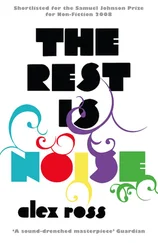Things did not turn out quite so rosily, but Mahler and America got along well. The conductor was no longer so addicted to perfection, nor did he hold himself aloof from society as he had done in Vienna. On a good night, he would take all seventy of his musicians out to dinner. He went to dinner parties, attended a séance, even poked his head into an opium den in Chinatown. When traveling to a concert, he refused the assistance of a chauffeur, preferring to use the newly constructed subway system. A Philharmonic musician once saw the great man alone in a subway car, staring vacantly like any other commuter.
A New York friend, Maurice Baumfeld, recalled that Mahler loved to gaze out his high window at the city and the sky. “Wherever I am,” the composer said, “the longing for this blue sky, this sun, this pulsating activity goes with me.” In 1909, at the beginning of his second New York season, he wrote to Bruno Walter: “I see everything in such a new light—am in such a state of flux, sometimes I should hardly be surprised suddenly to find myself in a new body. (Like Faust in the last scene.) I am thirstier for life than ever before …”
In his last New York season, Mahler ran into trouble with Mrs. Sheldon’s Programme Committee. A streak of adventurous programming, encompassing everything from the music of Bach to far-out contemporary fare such as Elgar’s Sea Pictures, met with a tepid response from traditional concertgoers, as adventurous programming often does. Meanwhile, Toscanini was ensconced at the Met, winning over New York audiences with, among other things, a Puccini premiere—the long-awaited Girl of the Golden West. For a time, it looked as though Mahler would return to Europe: the local critics had turned against him, as their Viennese counterparts had done, and he felt harried on all sides. In the end, he signed a new contract, and retained his equanimity of mood.
On the night of February 20, 1911, Mahler announced to his dinner companions, “I have found that people in general are better, more kindly, than one supposes.” He was running a fever, but thought nothing of it. The following night, against his doctor’s advice, he led a program of Italian works that included the premiere of Ferruccio Busoni’s Berceuse élégiaque, a beautifully opaque piece that seems to depict a soul entering a higher realm. This was Mahler’s final concert; a fatal infection, in the form of subacute bacterial endocarditis, was moving through his body. The remaining Philharmonic concerts were canceled. Mahler returned to Vienna, and died there on May 18.
European commentators made an anti-American cultural parable out of Mahler’s demise, as they had in the case of Symphonia domestica at the Wanamaker store. The conductor was a “victim of the dollar,” one Berlin newspaper said, of “the nerve-wracking and peculiar demands of American art.” Alma Mahler helped to foster this impression, perhaps as a way of diverting attention from her affair with Walter Gropius, which had caused her husband more angst than any of Mrs. Sheldon’s memos. “You cannot imagine what Mr. Mahler has suffered,” she told the press. “In Vienna my husband was all powerful. Even the Emperor did not dictate to him, but in New York, to his amazement, he had ten ladies ordering him about like a puppet.”
Mahler himself did not blame the dollar. “I have never worked as little as I did in America,” he said in an interview a month before his death. “I was not subjected to an excess of either physical or intellectual work.”
Resting on Mahler’s desk was the manuscript of his Tenth Symphony, which exhibits unmistakable evidence of the composer’s agony over the crisis in his marriage, but which may also contain a reflection of certain things he saw and felt in America. One American feature of the score is well known: the funeral march at the beginning of the finale—a dirge for tuba and contrabassoons, interrupted by thuds on a military drum—was inspired by the funeral procession of Charles W. Kruger, deputy chief of the New York Fire Department, who had died in 1908 while fighting a blaze on Canal Street.
There might also be an American impression in the symphony’s first movement, the climax of which contains a dissonance of nine notes. This awe-inspiring, numbing chord is usually associated with Mahler’s anguish over Alma, but it may also point to a natural phenomenon, some craggy, sublime feature of the American continent. Like the chords at the beginning of Strauss’s Zarathustra, it is derived from the overtones of a resonating string. The relationship becomes clear at the end of the movement, where the harmonic series is spelled out note by note in the strings and harp, like a rainbow emerging over Niagara Falls.
Stunned by his rival’s death, Richard Strauss could barely speak for days afterward. He commented later that Mahler had been his “antipode,” his worthy adversary. By way of a memorial he conducted the Third Symphony in Berlin. In a more oblique tribute, he decided to resume work on a tone poem that he had begun sketching some years before—a piece called The Antichrist, in honor of Nietzsche’s most vociferous diatribe against religion. Mulling over this project in his diary, Strauss wondered why Mahler, “this aspiring, idealistic, and energetic artist,” had converted to Christianity. Each man misunderstood the other to the end; Strauss suspected Mahler of surrendering to antiquated Christian morality, while Mahler accused Strauss of selling out to plebeian taste. The split between them forecast a larger division in twentieth-century music to come, between modernist and populist conceptions of the composer’s role.
In the end, Strauss’s last big orchestral work carried the more prosaic title An Alpine Symphony. It depicts a daylong mountain climb, complete with sunrise, storm, a magical moment of arrival at the summit, descent, and sunset. Beneath the surface, it may be partly “about” Mahler, as the critic Tim Ashley has suggested. In the section “At the Summit,” the brass intone a majestic theme, recalling the opening of Zarathustra. At the same time, the violins sing a Mahlerian song of longing in which one pleading little five-note pattern—two steps up, a little leap, a step back down—brings to mind the “Alma” theme of the Sixth. The intermingling of Mahlerian strings and Straussian brass suggests the image of the two composers standing side by side at the peak of their art. Perhaps they are back in the hills above Graz, gazing down at the splendor of nature while the world waits for them below.
The vision passes, as joyful scenes in Strauss tend to do. Mists rise; a storm breaks out; the climbers descend. Soon they are shrouded in the same mysterious, groaning chord with which the symphony began. The sun has set behind the mountain.
Конец ознакомительного фрагмента.
Текст предоставлен ООО «ЛитРес».
Прочитайте эту книгу целиком, купив полную легальную версию на ЛитРес.
Безопасно оплатить книгу можно банковской картой Visa, MasterCard, Maestro, со счета мобильного телефона, с платежного терминала, в салоне МТС или Связной, через PayPal, WebMoney, Яндекс.Деньги, QIWI Кошелек, бонусными картами или другим удобным Вам способом.












